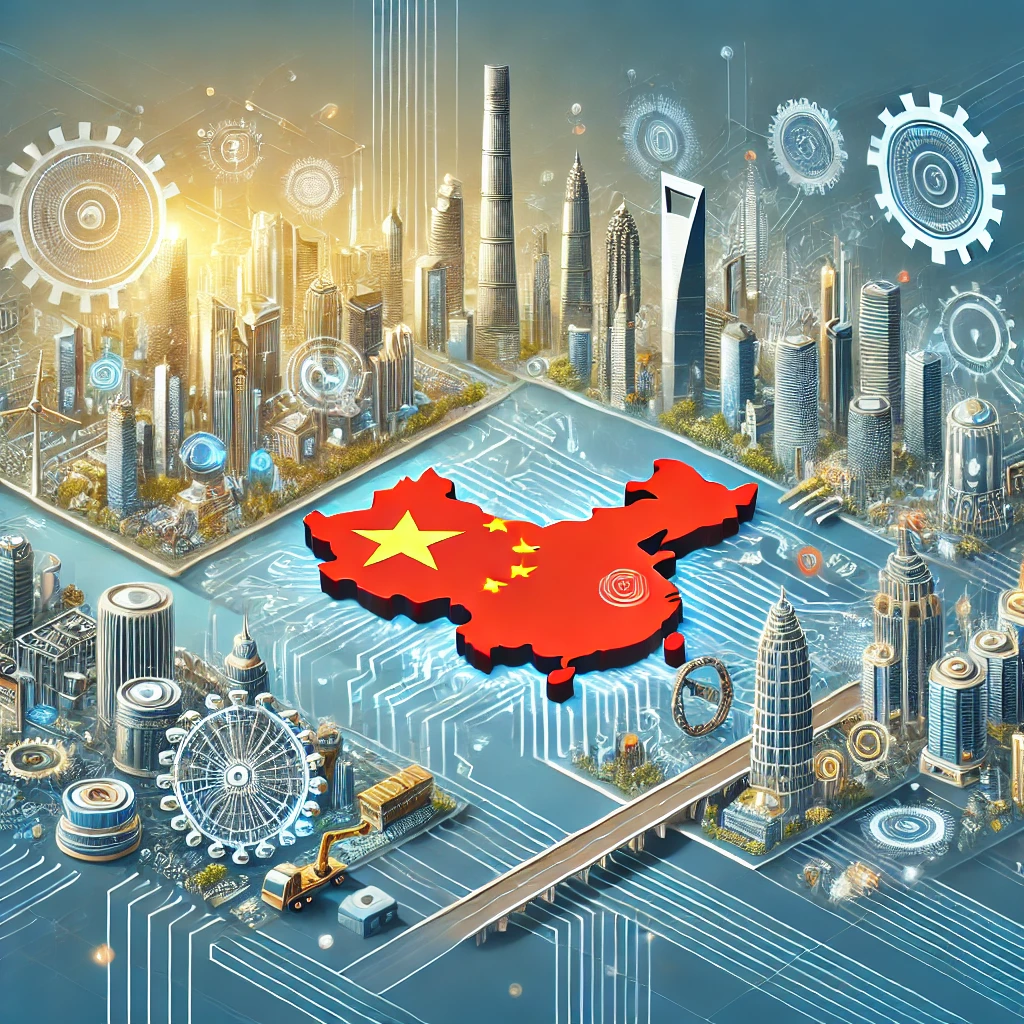
China Leads Innovation in the 4th Industrial Revolution with Cutting-edge Tech
The dawn of the 4th Industrial Revolution has brought about significant changes in the global technological landscape. Among the many nations striving for a leading position in this transformative era, China stands out as a dominant force. Thanks to its relentless investment in research and development (R&D) and a strong focus on emerging technologies, China is at the forefront of innovation in the 4th Industrial Revolution.
The Role of Research and Development
China has consistently increased its investments in R&D over the years. According to recent data, the country spends more than 2.4% of its GDP on R&D activities. This colossal investment is channelled into various sectors including artificial intelligence (AI), 5G technology, and the Internet of Things (IoT).
Artificial Intelligence (AI) Pioneers
China’s efforts in AI research augment its capabilities in automation, data analysis, and machine learning. The country is home to several AI-driven companies such as Baidu, Alibaba, and Tencent, which have gained global recognition. The Chinese government has also launched several initiatives aimed at making the country an AI powerhouse by 2030.
5G Technological Advancements
One of the most transformative technologies of this era is 5G. China’s role in 5G technological advancements cannot be overlooked. Telecom giants like Huawei and ZTE are leading the global race in 5G infrastructure. With the capability to provide unparalleled internet speeds and ultra-reliable low latency communication, 5G is set to revolutionize multiple industries, from healthcare to smart cities.
Expanding the Internet of Things (IoT)
The Internet of Things (IoT) stands at the heart of the 4th Industrial Revolution, and China is a dominant player in this field. With an estimated 80% of IoT devices manufactured in China, the country offers a conducive environment for innovation. The government has also supported IoT standardization and interoperability, fostering an ecosystem where devices can seamlessly communicate to deliver smarter solutions across various sectors such as agriculture, transportation, and energy management.
Government Initiatives and Policies
China’s rapid innovation in the 4th Industrial Revolution isn’t a mere coincidence but a result of carefully planned government strategies. Policies such as the “Made in China 2025” strategy aim to make China a global leader in high-tech industries. Various subsidies, grants, and incentives have been introduced to encourage both domestic and foreign investment in R&D.
Made in China 2025
The “Made in China 2025” initiative aims to transform China from a manufacturing giant into a global leader in high-tech industries. This strategy focuses on ten core areas, including advanced robotics, aerospace, and new energy vehicles. The initiative is designed to reduce dependency on foreign technology and boost domestic capabilities.
Innovation Hubs and Special Economic Zones
China has established numerous innovation hubs and special economic zones to facilitate technological advancements. Cities like Shenzhen, often dubbed “China’s Silicon Valley,” play a crucial role in nurturing startups and established tech firms alike. These zones offer numerous benefits including tax incentives, reduced bureaucracy, and access to a skilled workforce.
Global Collaboration and Partnerships
Global collaboration and partnerships have enabled China to integrate international expertise with its domestic innovation drive. The country actively collaborates with academic institutions and corporations worldwide to push the boundaries of technological achievement.
International Research Collaborations
Chinese universities and research institutions frequently collaborate with global counterparts to conduct cutting-edge research. These partnerships have resulted in numerous publications and innovations, enhancing China’s position as a leader in scientific research.
Foreign Direct Investments in Technology
Foreign technology firms find China an attractive destination for investment, primarily because of its massive consumer market and favorable government policies. Companies like Tesla have established significant operations within China, contributing to the country’s technological landscape and fostering mutual growth.
The Future of China’s Technological Dominance
The path ahead for China in the 4th Industrial Revolution is bright. With continued investment in R&D, supportive government policies, and an emphasis on global collaboration, China is well-poised to maintain its leadership in the realm of cutting-edge technologies.
The country’s advancements in AI, 5G, and IoT are merely the beginning of a long journey towards technological excellence. As other nations strive to keep pace, China’s blend of innovation, investment, and policy support ensures that it remains at the vanguard of the 4th Industrial Revolution.
Conclusion
As we witness the unfolding of the 4th Industrial Revolution, China’s role as a global leader in innovation is undeniable. Through its massive investments in R&D, proactive government policies, and fostering of international collaborations, China has positioned itself as a pivotal player in the global technological landscape.
Whether it’s their advancements in AI, 5G, or IoT, China’s commitment to pushing the boundaries of technology will continue to shape the future of the world. The nation’s journey from a manufacturing hub to a frontier of innovation is a testament to its strategic vision and relentless pursuit of excellence.